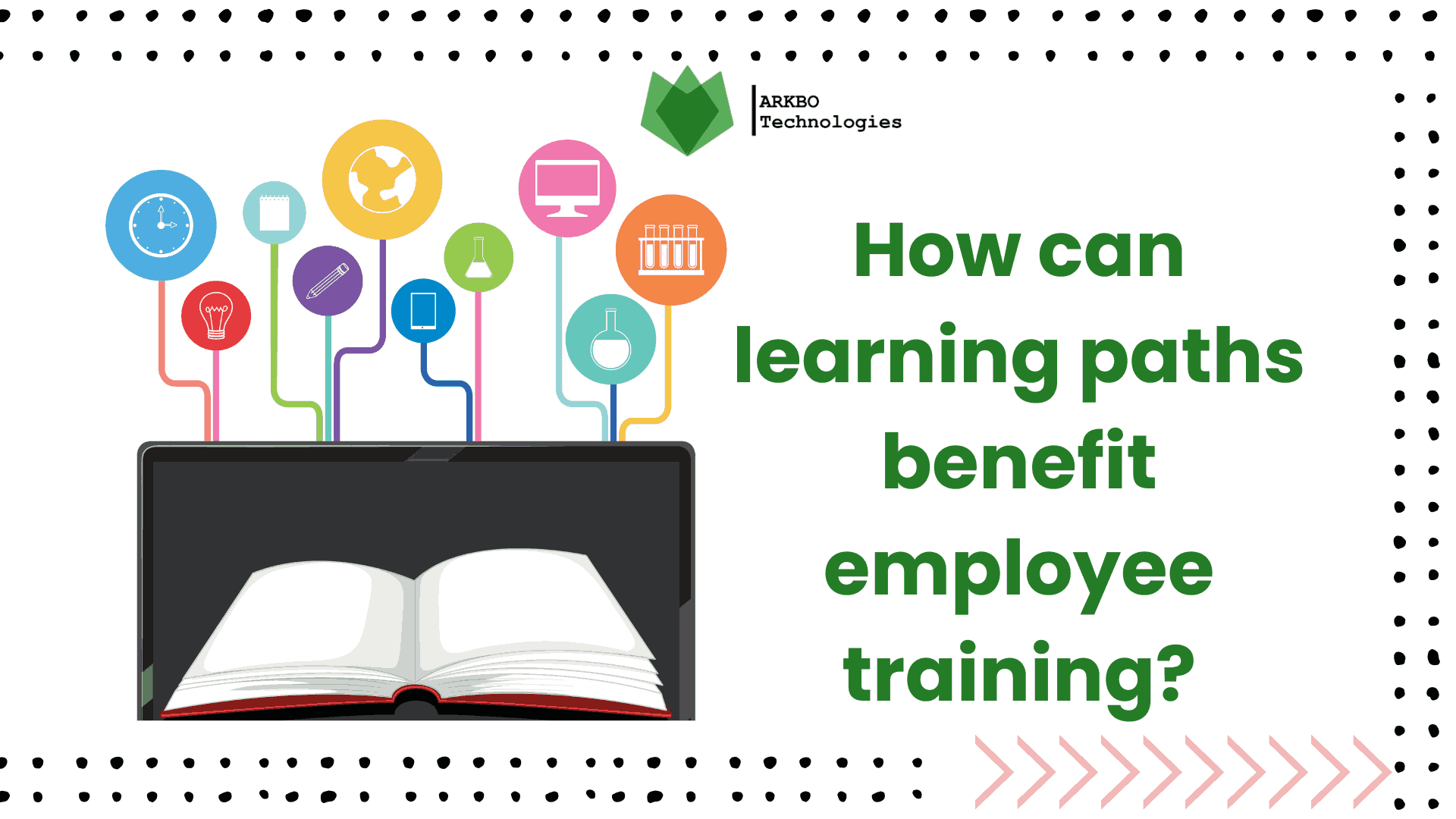
To match the demands of the modern workplace, organizations are investing in smarter and more effective employee training. To match such demands, employees have to be offered training and learning that offers personalized experiences. For such experiences, an understanding of employees’ learning paths is crucial. In this blog, we will learn about learning paths, various types available, and the advantages they offer for employee training. Let’s dive in!
What are Learning Paths?
A learning path refers to a structured sequence of educational activities, courses, or modules designed to help learners achieve a specific skill or knowledge goal. The primary goal of learning paths is to bring clarity, focus, and efficiency to training and development initiatives. Learning path encompasses well-defined objectives, straightforward lessons, assessments, assistance, and incentives upon completion.
What are the types of learning paths?
There are four types of learning paths
1. Linear or Sequenced Learning Path
In this category of learning path, it adheres to a predetermined sequence, requiring learners to finish each stage prior to progressing to the subsequent one. This path is best for onboarding or compliance training.
2. Learner Choice (Self-Directed or Alternative) Learning Path
In this pathway, learners can select the courses or modules they wish to undertake along the sequence in which they prefer to complete them. This pathway is particularly suitable for optional training in soft skills or when selecting from a range of electives aimed at professional development.
3. Level-Based Learning Path
This path organizes learning into tiers, such as beginner, intermediate, and advanced. Learners are required to complete all courses within a given tier before progressing to the subsequent one. This approach is ideal for programs such as technical certifications or leadership training that develop in phases.
4. Time-Based or Scheduled Learning Path
This learning pathway features predetermined start and end dates for every course or module. This approach is typically employed in educational contexts, seasonal initiatives, or when teams are required to complete their learning before a project deadline.
Benefits of Learning Paths for Employee Training
Let’s look into the ten advantages of understanding learning paths for employee training.
 1. A Clear and Guided Learning Journey
1. A Clear and Guided Learning Journey
Learning paths provide a methodical structure that guides staff members through their training. Instead of becoming intimidated by disorganized resources, employees can keep moving forward with their learning activities. Because they know what they will learn next, employees who receive personalized learning are better able to stay focused and confident
2. Personalized Training That Fits Individual Needs
With learning paths, accurate training for employees of various roles, skill levels, and personal goals can be achieved with the aid of l Employees can follow career paths that align with their individual development needs, regardless of whether they are new hires or seasoned professionals. Such personalization increases engagement and relevance while improving the efficacy of the learning process.
3. Flexibility to Learn Anytime, Anywhere
With structured learning paths, employees have the opportunity to engage in training at their own pace, choosing the most suitable times for themselves. This adaptability caters to various learning preferences and schedules, particularly in remote or hybrid work settings. It enables learners to better assimilate information without the stress of rigid class schedules.
4. Enhanced Knowledge Retention
learning path incorporates microlearning techniques and spaced repetition to enhance long-term memory retention. When a complex subject is divided into smaller lessons, learner are more likely to remember and apply the knowledge in their work. Additionally, bite-sized learning material reduces the likelihood of information overload.
5. Simple Progress Monitoring and Responsibility
Learning paths have built-in tracking features that show how far along a learner is. Employees can see their accomplishments or levels during training, which boosts motivation. Managers can monitor progress and identify staff members who need more help in the same time frame.
6. Uniform Training Throughout the Organization
No matter their department or location, all employees will receive training that is equally thorough and of the same quality thanks to the implementation of predefined learning paths. This consistency helps to reduce knowledge gaps and misunderstandings, which is especially important for jobs that require specialized knowledge or compliance.
7. Goal-Oriented Learning with Defined Objectives
Every learning path is designed with a specific objective in mind, whether that objective is to master a tool, acquire a certification, or improve a skill. These objectives help learners stay motivated and give them a sense of direction throughout the training process.
Role of Technology in Learning Paths
To improve employee learning's flexibility and accessibility, technology is crucial. Interactive materials like video, quizzes, and simulations increase engagement and keep learners/employees motivated to complete training on time with full dedication.
Using the latest technology, organizations can track employees' learning progress and even recommend better training activities. The artificial intelligence (AI) and machine learning (ML) help in personalizing the training and learning. All in all, using technologies like the Learning Management System (LMS) saves a lot of time and lowers training costs.
How Does an LMS Support Learning Paths?
A Learning Management System (LMS) helps companies organize and deliver training in one place. It makes it easy for employees to access their learning materials anytime and from any device. Based on their job or role, the LMS can automatically assign the right learning paths to each person. Further, managers can track who is learning what, how far they’ve gone, and how well they’re doing through quizzes and progress updates.
Looking for the best LMS system for your corporate organization? ARKBO LMS has got your back.
ARKBO LMS is an LMS in Nepal that is built for effective employee training, where employers or relevant authorities can easily assign pertinent courses to employees. It sets up role-based learning paths which support all types of learners and keeps training structured and goal-driven. Not just that, but its inclusive training and learning feature makes the experience wholesome for all employees.
Final Thoughts
Learning paths are structured training programs that guide employees through classes one step at a time to help them learn specific skills or knowledge. They help employees stay motivated, learn at their own pace, and become better at remembering information.
ARKBO LMS is a learning platform that offers organizations easy and streamlined employee training. businesses to support onboarding, assign courses according to job roles, and foster inclusive learning for all staff members.
If you have checked for the signs your organization needs LMS in your organization, you can take the next step to introduce ARKBO LMS in your company. Book a demo right now!
Read More: Complete Guide To LMS for Your Organization